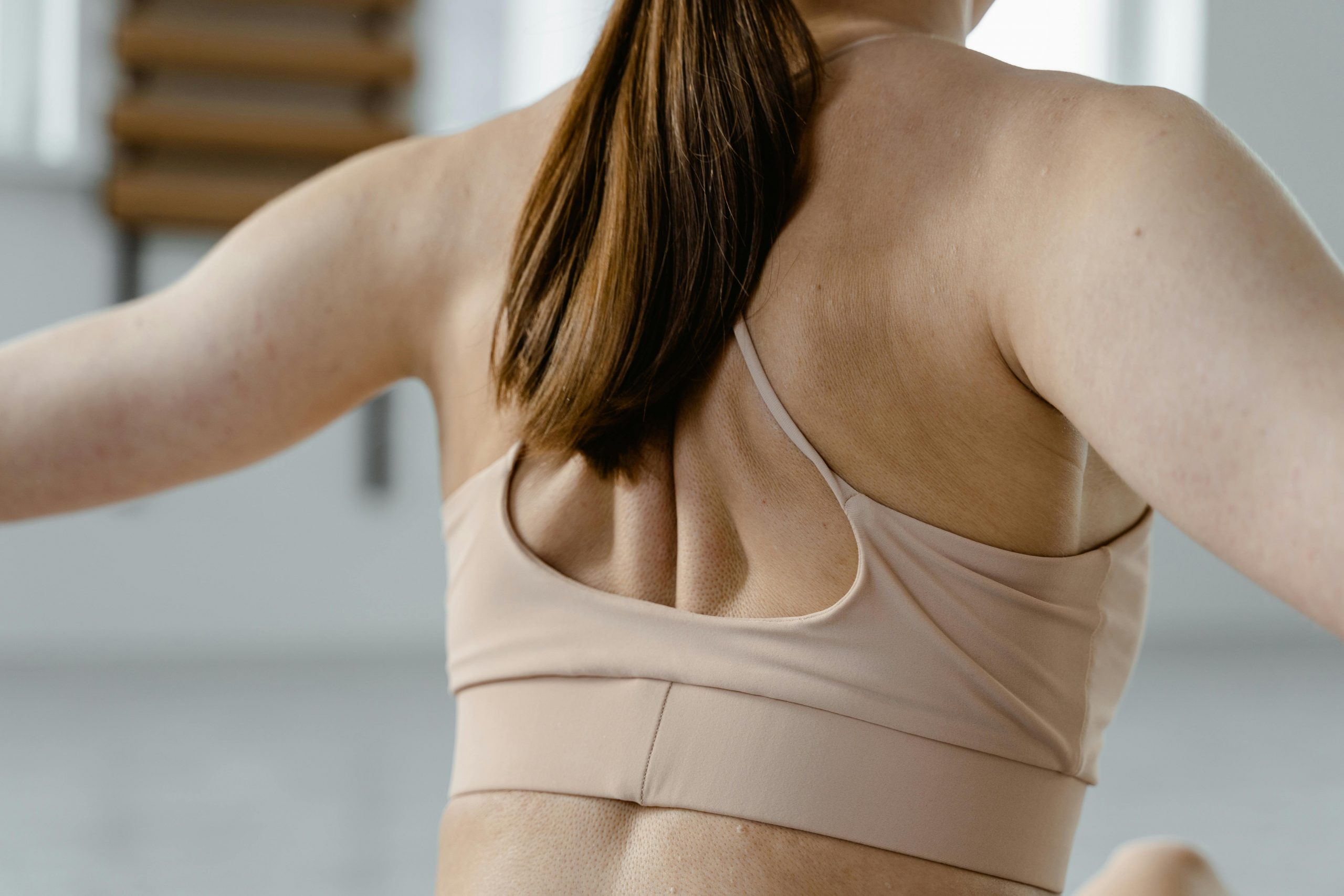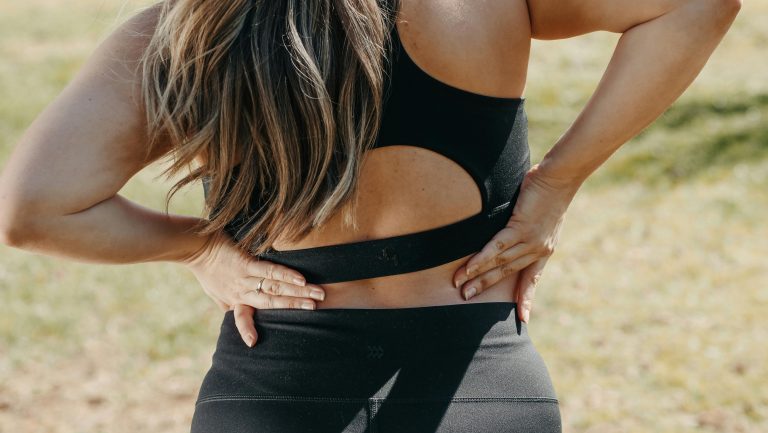How to Get Rid of Back Fat: A Comprehensive Guide to Achieving a Sleek, Toned Back

Back fat is a common concern for many people, but it doesn’t have to be a permanent problem. Whether you’ve noticed fat accumulating around your upper back, lower back, or love handles, there are many ways you can target and reduce back fat. This guide will walk you through the steps you can take, from exercises that specifically target the back muscles to lifestyle changes and diet adjustments that will help you achieve a leaner physique.
What Causes Back Fat?
Back fat is typically caused by a combination of factors, including genetics, poor diet, lack of exercise, and hormonal changes. While some people may be more predisposed to storing fat in certain areas of their body, the accumulation of fat around your back can also be linked to:
- Poor Posture: Slouching or sitting in an improper posture can lead to muscle weakness in the back, contributing to the buildup of fat.
- Excessive Calorie Consumption: Eating more calories than your body can burn leads to fat storage. When you consistently eat more than your body needs, it stores the excess as fat, including in your back.
- Lack of Physical Activity: A sedentary lifestyle that lacks regular physical activity can lead to weight gain and fat accumulation.
- Hormonal Imbalances: Hormones play a significant role in fat storage, and fluctuations in hormones like cortisol or insulin can cause fat to accumulate, especially in the back area.
- Age: As you age, your metabolism may slow down, and your body may store fat more easily, including in the back.
How to Get Rid of Back Fat: Effective Strategies

While spot reduction is a myth, there are several strategies you can use to reduce overall body fat, which will help eliminate back fat. Below are some practical tips and steps to help you get rid of back fat:
1. Exercise for a Toned Back
A combination of strength training and cardio exercises is the most effective way to get rid of back fat. While you can’t target back fat specifically, exercises that focus on the back muscles, along with fat-burning cardio, will help burn calories and tone your back. Here are some exercises you can do:
Strength Training Exercises for the Back
- Lat Pulldowns: Lat pulldowns target the muscles of your upper back. Using a cable machine, pull the bar down toward your chest while keeping your back straight and engaging your core. This exercise helps to strengthen and tone the back muscles, which can give the appearance of a leaner back.
- Rows (Bent-over or Seated): Rows are a fantastic exercise to work the upper back and help with fat reduction. To perform bent-over rows, bend at the hips with your knees slightly bent. Hold dumbbells or a barbell, and pull the weight toward your torso, squeezing your shoulder blades together. Seated rows with a machine or cable are also effective for targeting the back muscles.
- Reverse Flys: This exercise works the rear deltoids and upper back muscles. Stand with a slight bend in your knees and lean forward slightly, holding dumbbells in each hand. Open your arms out to the sides while keeping a slight bend in your elbows, squeezing your shoulder blades together. This move targets the upper back and helps with overall back toning.
- Supermans: This bodyweight exercise targets the lower back. To perform a Superman, lie face down on the floor with your arms and legs extended. Lift your arms, chest, and legs off the ground simultaneously, hold for a few seconds, and lower back down. This will engage the muscles in your lower back, improving strength and posture.
Cardio for Fat Loss
While strength training helps tone your back muscles, cardio exercises help burn calories and reduce body fat. Cardio exercises like running, cycling, swimming, and dancing are great options for increasing your heart rate and burning fat. Aim for at least 150 minutes of moderate-intensity cardio each week to see results.
2. Adopt a Healthy, Balanced Diet
To reduce back fat, it’s crucial to combine exercise with a healthy, calorie-controlled diet. A diet rich in whole foods like fruits, vegetables, lean proteins, and healthy fats will support your weight loss goals and overall health.
Focus on Protein
Eating more protein can help you build muscle and increase your metabolism, which will support fat loss. Include lean sources of protein like chicken, fish, tofu, eggs, and beans in your diet. Protein also helps you feel full, reducing the temptation to snack on unhealthy foods.
Limit Processed Foods and Sugar
Processed foods, sugary snacks, and beverages can contribute to excess calorie intake and fat gain. Avoid foods high in sugar, trans fats, and refined carbohydrates, such as pastries, chips, and sugary drinks. Opt for healthier snacks like fruits, nuts, and whole grains instead.
Portion Control
Even healthy foods can lead to weight gain if consumed in excess. Practice portion control by eating smaller meals throughout the day and being mindful of your caloric intake. Use a food diary or a mobile app to track your meals and ensure you’re staying within your daily caloric needs.
3. Improve Your Posture
Good posture not only makes you look taller and more confident but also helps strengthen your back muscles and prevent back fat from accumulating. When you sit or stand with proper posture, your back muscles are engaged, and you can avoid slouching that may lead to muscle weakness and fat storage. Here are some tips for better posture:
- Stand tall: Keep your shoulders back, chest open, and chin parallel to the ground.
- Sit properly: When sitting, avoid slumping or leaning forward. Keep your feet flat on the ground and your back supported by a chair.
- Strengthen your core: A strong core supports good posture. Incorporate exercises like planks and ab crunches into your routine to improve posture.
4. Stay Hydrated and Get Enough Sleep

Drinking plenty of water throughout the day helps maintain your metabolism and supports fat loss. Additionally, staying hydrated helps prevent bloating, which can make back fat appear more prominent.
Sleep is another key factor in fat loss. Lack of sleep can affect your hormones, leading to increased hunger and cravings for unhealthy foods. Aim for 7-9 hours of quality sleep each night to support fat loss and overall health.
5. Targeting Stress and Hormonal Imbalance
Stress and hormonal imbalances can contribute significantly to the accumulation of fat in areas like the back. When you experience chronic stress, your body produces a hormone called cortisol, which has been linked to increased fat storage, especially around the abdomen and back. Stress can also trigger unhealthy eating habits, such as emotional eating or overconsumption of high-calorie, processed foods.
How to Manage Stress
- Exercise: Regular physical activity not only helps with weight loss but also reduces stress by releasing endorphins, your body’s natural mood boosters. Incorporate activities like yoga, walking, or swimming into your routine to promote relaxation.
- Mindfulness and Meditation: Taking time to practice mindfulness, meditation, or deep breathing exercises can help lower stress levels. Even just 10-15 minutes a day of deep breathing can significantly improve your mood and help you manage stress more effectively.
- Adequate Rest: Sleep is crucial for regulating cortisol levels and supporting overall health. A lack of sleep can exacerbate stress and lead to weight gain. Ensure you’re getting 7-9 hours of restful sleep each night to help keep your stress levels in check and support fat loss.
Balancing Hormones
In addition to stress management, addressing any underlying hormonal imbalances can also help reduce back fat. Conditions like polycystic ovary syndrome (PCOS) or thyroid issues can affect your metabolism and fat distribution. If you suspect that hormonal imbalances might be contributing to your back fat, consult a healthcare provider for proper testing and treatment. Sometimes, medication or lifestyle changes can help restore hormonal balance, making it easier to lose fat.
6. Tracking Progress and Staying Motivated
One of the most important aspects of getting rid of back fat is staying motivated and tracking your progress over time. Results won’t happen overnight, and it’s easy to get discouraged if you don’t see immediate changes. However, with consistency, you’ll start to see gradual improvements.
Ways to Track Your Progress
- Take Progress Photos: Sometimes, changes in your body may be more noticeable in photos than in the mirror. Take pictures of your back every couple of weeks to track your progress over time.
- Monitor Measurements: Instead of focusing solely on the scale, measure key areas of your body, such as your waist, hips, and back. A reduction in measurements can be a better indicator of fat loss than weight alone.
- Celebrate Small Wins: Even small improvements in your fitness or body composition should be celebrated. Whether it’s lifting heavier weights, fitting into an older pair of jeans, or noticing more muscle definition in your back, these wins will help keep you motivated.
Staying Motivated Long-Term
Getting rid of back fat is a long-term commitment, so staying motivated is essential. Consider setting short- and long-term goals to give yourself something to work toward. Join a fitness community, track your meals with a food app, or partner with a friend for workout sessions to keep the journey enjoyable and engaging. Also, remember to be patient with yourself and understand that progress may come slowly, but it will happen as long as you stay consistent.
7. Incorporating Proper Posture and Core Strengthening Exercises
Another crucial factor in reducing back fat and improving the overall appearance of your back is posture. Poor posture, such as slouching or rounding your shoulders, can make back fat more noticeable. When you slouch, your muscles aren’t engaged properly, and fat deposits may become more prominent. Additionally, weak core muscles can contribute to poor posture, which can lead to discomfort and exacerbate back fat.
Improving Posture
Maintaining good posture throughout your daily activities can make a significant difference in how your back looks. Focus on standing tall with your shoulders back, chest lifted, and chin slightly tucked in. This will help engage the muscles along your spine, reducing the appearance of back fat and improving your overall body alignment.
Here are some tips to improve posture:
- Stand Tall: Imagine a string pulling you upward from the top of your head.
- Engage Your Core: Keep your abdominal muscles slightly contracted to support your lower back.
- Sit Properly: When sitting, ensure your back is straight, and your shoulders are aligned with your hips. Avoid slouching, especially while sitting at a desk or in front of a computer.
Core Strengthening Exercises
Core exercises help not only to flatten the stomach but also improve posture and support the muscles in your back. A strong core contributes to better posture, which can make a significant difference in how much back fat is visible. Some effective core exercises include:
- Planks: Hold a plank position for 20-30 seconds, gradually increasing the time as you build strength.
- Dead Bugs: Lie on your back with your arms and legs lifted, and alternate extending your limbs in a controlled motion while keeping your lower back pressed into the floor.
- Supermans: Lie face down and lift your arms and legs off the floor, squeezing your lower back and glutes.
By incorporating core exercises into your workout routine and focusing on proper posture throughout the day, you can not only reduce the appearance of back fat but also enhance your overall strength and health.
8. Consider Professional Help
If you’ve tried dieting and exercising and still struggle with back fat, you might consider seeking professional help. A personal trainer can guide you through exercises tailored to your goals, while a nutritionist can help create a meal plan that aligns with your weight loss objectives.
In some cases, medical procedures such as liposuction or body contouring may be an option to remove stubborn back fat. These procedures should be discussed with a qualified healthcare professional.
Conclusion
Getting rid of back fat is a gradual process that requires a combination of exercises, healthy eating, good posture, and lifestyle changes. By incorporating strength training exercises, cardio, and a balanced diet into your daily routine, you’ll be well on your way to achieving a toned, lean back.
Remember that consistency is key. It may take time to see visible results, but with dedication and perseverance, you can reduce back fat and achieve the body you’ve always wanted.
Stay focused on your goals, and be patient with yourself as you work towards creating a healthier, more confident version of yourself.

